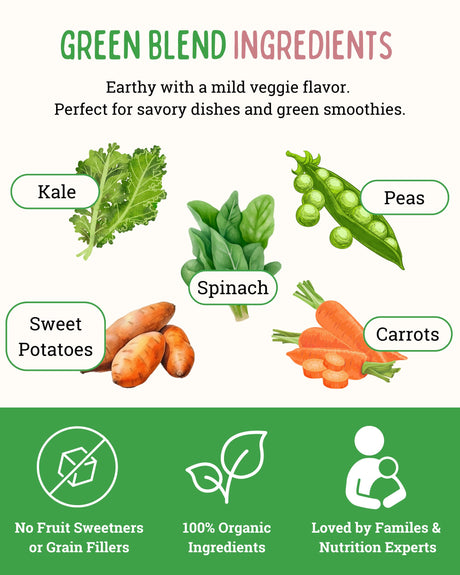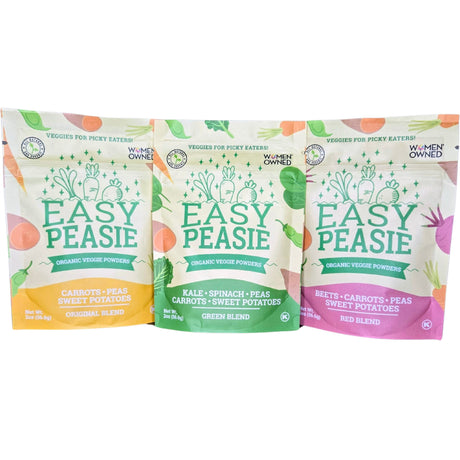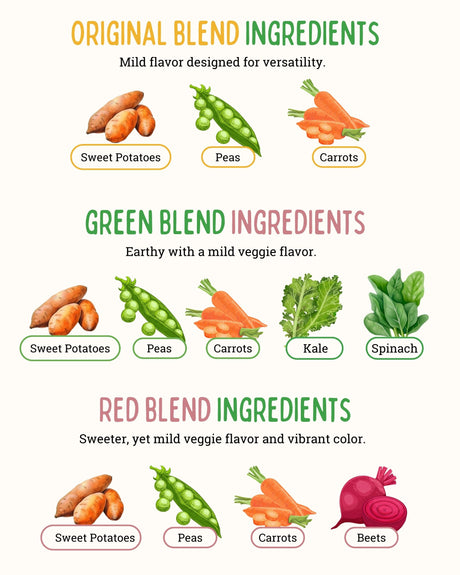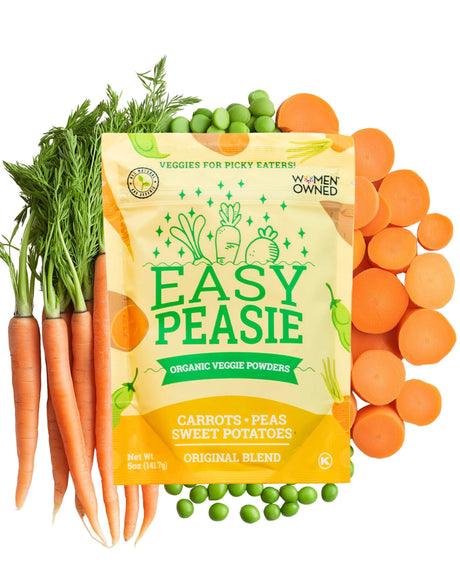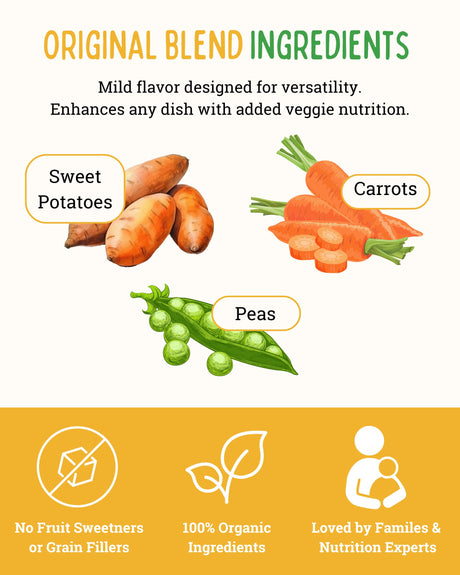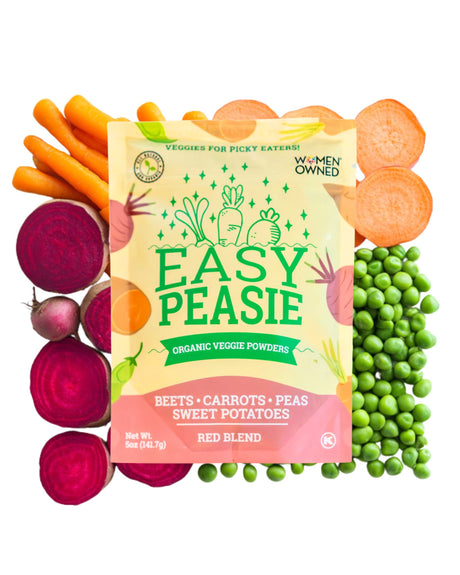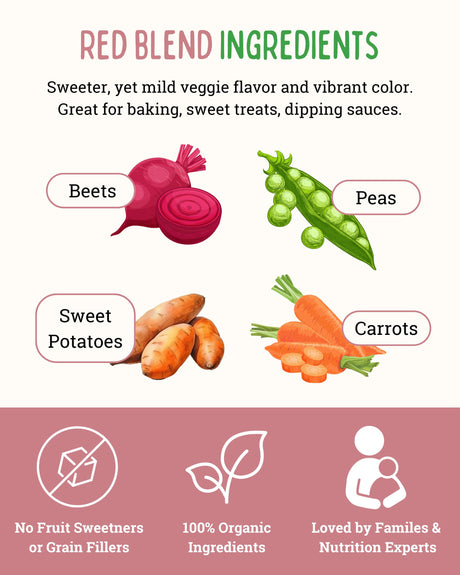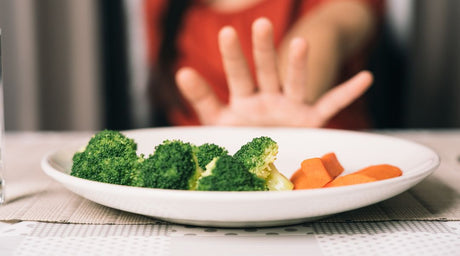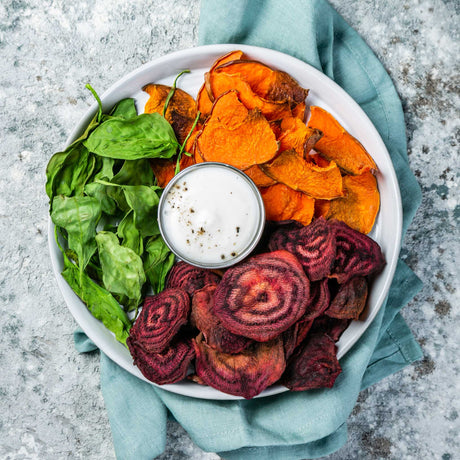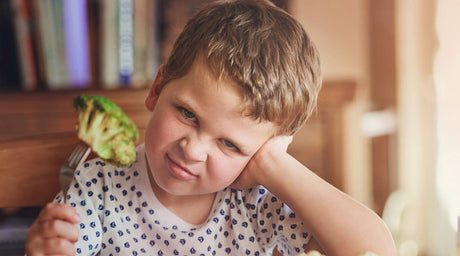The Picky Eater Predicament
The Dinner Table Standoff
It's a scene as old as time: a stubborn child, a plate of untouched greens, and a parent at their wit's end. Picky eating is more than just a frustrating mealtime ritual; it's a hurdle many families face daily.
The reasons behind those tightly sealed lips range from simple taste preferences to complex sensory issues, but the result is the same — a battle of wills where, unfortunately, nutrition is often the casualty.
Vegetables: The Unsung Heroes of Growth

Amidst this struggle lies the undeniable truth: vegetables are vital. They're the unsung heroes of growth, packed with vitamins, minerals, and fibers essential for development.
Yet, convincing a picky eater of the wonders of broccoli and beets is no small feat. How do we bridge the gap between what's on the fork and what's needed for our children's health?
A Sprinkle of Strategy
In the following sections, we'll explore not just the 'whys' of picky eating, but the 'hows' of overcoming it. From clever presentation tricks to the stealthy incorporation of vegetable powders, we'll arm you with an arsenal of strategies to transform your picky eater into a veggie enthusiast. Let's turn that dinner table standoff into a victory march for nutrition.
Understanding Picky Eaters
Defining the Dilemma
A picky eater can be a child who has a limited selection of foods they will eat, often avoiding entire food groups, such as vegetables. This behavior is not just about disliking a particular food; it's a consistent pattern of rejecting the unfamiliar or less preferred.
Roots of Resistance
The reasons behind picky eating are as varied as the children themselves. Some are born out of a natural evolutionary caution against unknown foods that might have been harmful.
Others may stem from sensory processing issues, where textures or flavors are perceived intensely. Early experiences, family eating patterns, and even genetics play roles in shaping a child's palate.
The Mind on the Plate
Psychology intertwines deeply with eating behaviors. Food preferences and aversions aren't just whims; they're complex reactions involving taste buds, past experiences, and even emotional associations. Understanding that a child's refusal may be tied to something deeper than just the taste can be a game-changer in addressing picky eating.
The Nutritional Gap
Missing Pieces in the Dietary Puzzle
Picky eaters, especially those turning their noses up at vegetables, are at risk of missing out on a spectrum of essential nutrients. Vitamins such as A, C, and K, along with minerals like magnesium and potassium, are abundant in vegetables and are crucial for overall health. Without these, children may not get the necessary components for optimal growth and immune function.

The Long View on Veggie Deficiency
The implications of a diet lacking in vegetables stretch far beyond the immediate woes of mealtime battles. Over time, a vegetable-deficient diet can lead to significant gaps in nutrition, potentially impacting everything from bone health to cognitive development. It's not just about today's dinner; it's about setting the stage for a lifetime of health and well-being.
Creative Presentation
A Feast for the Eyes
Never underestimate the power of a visually appealing plate. Children are often drawn to foods that are colorful and creatively presented.
Turning a meal into a visual feast can be the key to piquing the interest of a picky eater. Brightly colored veggies arranged in fun patterns or shapes can transform the dining experience from mundane to magical.
Fun with Food
Who says you can't play with your food? Presenting vegetables in imaginative ways can make them more enticing to children.
Think of crafting veggie-based characters, landscapes, or even using cookie cutters to create shapes that kids recognize and love. This not only makes the food more appealing but also engages children's creativity and curiosity about their meals.
Color Their World
A splash of color can work wonders. Incorporating a rainbow of vegetables not only makes for a more enticing plate but also ensures a variety of nutrients. Use the natural hues of bell peppers, carrots, spinach, and tomatoes to create a vibrant mosaic that's as nutritious as it is attractive.
Remember, we eat with our eyes first, and a colorful plate is more likely to be a plate that gets cleaned.
Incorporating Flavors
Flavor Pairings
Introducing vegetables doesn't have to be a battle. Start by pairing them with flavors your child already loves.
Does your little one have a penchant for cheese? Sprinkle some over steamed broccoli or cauliflower.

Adore pizza? Try adding finely chopped veggies to the sauce. It's all about making those first vegetable experiences positive and delicious.
Taste Adventures
Children's palates are wonderfully malleable. Begin by introducing milder vegetables and then slowly work up to more complex flavors.
A gradual introduction allows children to become accustomed to the taste of vegetables without overwhelming them. It's like building a flavor bridge from the familiar to the new and exciting.
Flavor Training Wheels
Think of flavor training as a journey, not a sprint. It's about exposing young palates to a wide range of tastes over time. This can be done through repeated exposure and by incorporating small amounts of new vegetables into favorite dishes.
Over time, this 'training' can help children develop a taste for vegetables naturally, leading to healthier eating habits that last a lifetime.
The Power of Choice
Empowering Selections
Empower your children by involving them in the selection process. Whether it's at the grocery store or in the garden, let them pick out a new vegetable to try each week. This not only makes them feel valued but also piques their curiosity about the food on their plate.
Involve to Inspire
Involvement in meal preparation can be a game-changer. Encourage your kids to wash the veggies, mix the salad, or even press the buttons on the blender for a smoothie.
This hands-on experience builds familiarity and a sense of ownership, which can translate to more enthusiasm at the dinner table.
Curated Choices
While it's great to offer choices, too many options can be overwhelming for a child. Simplify the decision-making process by offering a limited selection.
For instance, ask, "Would you like carrots or cucumbers with your lunch?" instead of an open-ended "What vegetables do you want?" This approach offers them a sense of control while steering them towards making a healthy choice.
Cooking Techniques That Transform Veggies
Method Matters
The way we cook vegetables can make a world of difference. Roasting can bring out a natural sweetness, while grilling can add a desirable smoky flavor. Experiment with different methods like steaming, sautéing, or even raw preparations to find what tickles your child's taste buds.
Recipe Reinvention
Transform classic favorites into veggie-packed wonders. Think of incorporating finely shredded zucchini into turkey meatballs, or blending spinach into a fruit smoothie. These recipes maintain familiar flavors while boosting nutritional value, making them perfect for picky eaters.
Herbs and Spices: The Flavor Enhancers
Don't shy away from herbs and spices; they can be the secret to loving veggies. A sprinkle of cinnamon on sweet potatoes or some fresh basil on tomatoes can elevate the dish.

Start with mild herbs and spices, and as your child's palate develops, you can get more adventurous with flavors.
The Role of Vegetable Powders
A Sprinkle of Nutrition
Vegetable powders like EasyPeasie offer a convenient and versatile way to boost nutrition. These finely milled powders can be a lifesaver for parents of picky eaters, sneaking in the goodness of veggies without a fuss.

Benefits Beyond Convenience
The beauty of vegetable powders lies not only in their convenience but also in their nutritional profile. They retain much of the vitamins, minerals, and fiber found in fresh vegetables, making them an excellent supplement to children's meals.
Invisible Integration
Incorporating vegetable powders into your child's diet can be as simple as stirring a spoonful into pasta sauces, mixing into batters for pancakes or muffins, or even sprinkling over popcorn. The key is to add them to foods your child already loves, making the transition seamless and stress-free.
Recipe Ideas Using Vegetable Powders
Simple Swaps for Big Impact
Incorporating vegetable powders into everyday recipes is a breeze. Think about the meals your kids already crave and how a simple sprinkle of EasyPeasie can up the nutritional ante.
For instance, a tablespoon of Green Blend can mix invisibly into a batch of spaghetti sauce, or a dash of Red Blend can sweeten up a smoothie.
When you stir vegetable powders into a recipe, you're not just adding flavor—you're fortifying the meal with vitamins and minerals essential for your child's growth. Every child's palate is unique, and vegetable powders are versatile enough to match.
Educating and Empowering Kids
Planting Seeds of Knowledge
Education is a cornerstone of developing healthy habits. Start conversations about why vegetables are the superheroes of the food world.
Use age-appropriate language to explain how they strengthen our bodies and help us grow. Resources like colorful charts, fun fact cards, and even kid-friendly documentaries can turn a lesson into an adventure.
Storytime with a Side of Veggies
There's a buffet of children's books out there that celebrate healthy eating. Titles like "Vegetables in Underwear" and "Eating the Alphabet" can make the idea of veggies fun and relatable. Storytime can double as a learning moment, subtly reinforcing the benefits of a balanced diet.
Interactive Nutrition
Kids learn best when they're having fun, so why not turn nutrition education into a game? Create a veggie passport, where they get a stamp for each new vegetable they try. Or set up a tasting station with different veggie powders mixed into dips and sauces, and let them rate their favorites.
Engaging their senses and curiosity can transform reluctance into enthusiasm for healthy eating.
Consistency and Patience
Regular Veggie Encounters
Consistency is key in normalizing vegetable consumption for children. Regularly include a small portion of veggies with meals, even if they're not the star of the plate. This repeated exposure can gradually reduce resistance and build familiarity, turning "yuck" into "yum" over time.
Celebrating Small Wins
Patience is a virtue, especially when it comes to introducing new foods to picky eaters. Celebrate the tiny victories, like when they agree to keep a vegetable on their plate or take a small bite. These moments can lead to bigger breakthroughs, so keep the veggie vibe positive and pressure-free.
Realistic Veggie Goals
It's important for parents to manage their expectations. Not every meal will be a hit, and that's okay. Children's palates are works in progress.
By setting achievable goals, like trying one new vegetable a week or incorporating a teaspoon of veggie powder into a favorite dish, parents can create a less stressful environment for everyone at the dinner table.
Community and Support
Joining Forces with Fellow Parents
Navigating the picky eater phase can feel isolating, but it's a shared experience for many. Finding a community, whether online or in person, opens up a space to connect with others facing similar challenges. Sharing stories and strategies can be incredibly validating and helpful.
Sharing Successes and Setbacks
Every child is unique, and what works for one may not work for another, but exchanging ideas can spark inspiration. Encourage open discussions about both the successes and the setbacks. This transparency fosters a supportive environment where parents can learn from each other's experiences.
Leveraging Support Resources
There's a wealth of resources available for parents of picky eaters. From support groups to nutritionists specializing in pediatric feeding, don't hesitate to reach out for professional advice. Remember, seeking support is a sign of strength and commitment to your child's health and well-being.
Final Thoughts
A Journey of Taste and Nutrition
As we've explored, transforming veggies into a child's friend rather than foe is a journey. It's about creativity, persistence, and a sprinkle of nutritional savvy. Remember, every small step is progress in cultivating a lifelong appreciation for healthy eating.
Keep the Creativity Cooking
Don't be disheartened by the occasional turned-up nose or untouched plate. Keep experimenting with presentation, flavors, and cooking techniques. Your efforts are planting the seeds for healthy habits, even if the fruits (and vegetables) of your labor aren't immediately visible.
Sharing is Caring
Your experiences are invaluable, and sharing them can light the way for others navigating the picky eater phase. Whether it's a clever recipe that sneaks in some greens or a new approach to grocery shopping that gets your little one excited about veggies, your stories have the power to inspire.
We're in This Together
Remember, you're not alone on this veggie voyage. There's a whole community of parents out there, armed with vegetable powders and peeler in hand, all striving towards the same goal.
So, let's keep the conversation going—share your triumphs, your novel recipes, and yes, even those "try again tomorrow" moments. Together, we're growing a generation of veggie lovers, one bite at a time. #easypeasie
Leave your comments below; we love to hear from you! And don't forget to follow EasyPeasie for more veggie info and convo on YouTube, Facebook, and Instagram! ~ThePeas



